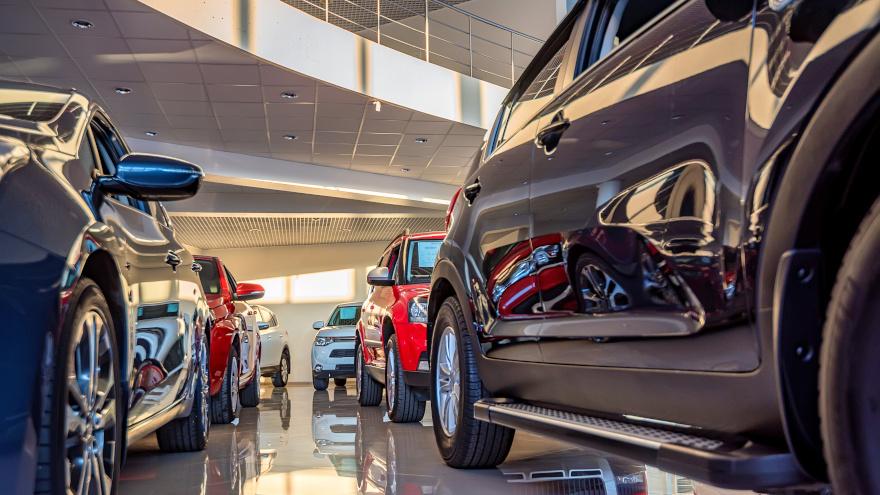COMMENTARY: 9 automotive retail trends to watch for the rest of 2024

As we inch closer to the end of 2024, auto dealers are seeing several shifts and developments that will shape their vehicle inventory levels and marketing strategies through the remainder of the year.
With inventory levels rising and more car buyers opting for hybrid vehicles over EVs, many dealerships are still struggling to turn vehicle browsers into buyers as they adjust to this new normal. Auto dealers need more performance-based personalized marketing to boost sales the rest of the year, and here are nine trends they should know before 2025 begins.
- Inventory levels stabilizing
According to recent data, total vehicle inventory stood at 2.79 million at the beginning of August, bringing dealerships closer to the conditions seen before the pandemic.
While part of this influx is due to the arrival of 2025 models, buyers are approaching the market with more caution and are considering used cars as opposed to new. This trend should persist for the near future even if interest rates begin to fall from their highs.
Dealers should consider how they advertise specific vehicles to consider all the factors that impact the car buying process, such as consumer behavior and market demand. Marketing at the VIN level leveraging advanced data analytics should be a huge point of emphasis for dealers, especially as they look to best personalize their interactions with consumers.
- Slower adoption of electric vehicles
EVs are not gaining traction as quickly as once anticipated. Despite substantial investments and incentives, the adoption of EVs in the U.S. has been slower than expected over the last 12 months.
Challenges such as limited charging stations, concerns about battery longevity and safety, and the higher costs of EVs overall have impacted the expected growth. While leading companies like Tesla and popular models like the Hyundai IONIQ 6 have made progress, the anticipated surge in EV sales has not yet materialized.
To address this issue, dealerships should focus on educating customers about EV benefits and the concerns of charging infrastructure and battery safety. Because of this slower adoption, dealerships will also want to keep a watchful eye on inventory carryover for EV vehicles and leverage advanced inventory data to carefully set any markdowns on these units.
- Hybrid vehicles making a comeback
On the other hand, hybrid vehicles are becoming increasingly popular as a more practical alternative to fully electric options. Hybrids offer a more gradual transition for consumers who are unsure about switching to electric vehicles entirely, addressing concerns related to range and charging infrastructure.
Given their longer presence in the market, hybrids are well understood by both dealers and customers, making them an appealing option for those looking for a balance between traditional and electric driving. Hybrids also present a choice for those who want to benefit from improved fuel efficiency without the immediate need for extensive changes in their driving habits or routines.
Dealerships can capitalize on this trend through integrating hybrids into their inventory and through communicating their benefits to potential buyers. This can help dealers attract a wider range of buyers who are seeking practical and efficient vehicles, which have the potential to drive sales and improve customer satisfaction.
- Shift to performance-based marketing
Marketing strategies are shifting toward performance-based models. This means dealerships are focusing their marketing budgets on approaches that deliver measurable results. This trend brings awareness to the importance of tracking individual campaigns through the overall customer journey.
Although online research is an important first step for many buyers, the final purchase still typically occurs in person. Dealerships need to ensure their digital marketing not only attracts visitors but also effectively converts leads through follow-ups. Data driven sales can improve the accuracy of targeting efforts and potentially increase the likelihood of converting leads to sales.
- Growth in the used-car market
The used-car market, particularly certified pre-owned (CPO) vehicles, is experiencing steady growth. The increasing demand for budget-friendly options is driving up pre-owned vehicle sales.
Additionally, the availability of used cars is expanding, which has led to a decline in used car prices. This growth requires dealerships to adapt their inventory strategies and marketing efforts to meet the changing preferences of buyers.
- Price adjustments for SUVs
There are signs that SUV prices might decrease. Recent data indicates a slight reduction in the average price of new vehicles, with Kelley Blue Book reporting a 1.4% dip in January compared to the previous year. This could impact SUV pricing until the end of the year. Dealerships may benefit from offering more competitive prices on SUVs and other higher-priced models to attract buyers who are becoming more price-conscious.
As the market changes it would benefit dealerships to stay informed on pricing trends and adjust inventory and markdown strategies accordingly to help attract customers and remain competitive to minimize inventory carryover risk.
- Importance of digital strategies
With consumers relying heavily on online research, maintaining a strong digital presence is important for dealerships. Digital marketing strategies are necessary to engage today’s buyers. Access to reliable data helps refine these strategies, allowing dealerships to target their marketing efforts more effectively.
It’s important for dealerships to use advanced tools and platforms that provide reliable data and insights. By staying up to date with digital trends a utilizing data, dealerships can improve their online visibility and attract more customers.
- Personalization
Personalization remains a key factor in marketing. Utilizing data from both online and offline interactions allows dealerships to tailor their marketing strategies more accurately. Creating customized experiences — from targeted advertisements to individualized sales pitches — helps dealerships build stronger connections with potential buyers and improve their marketing efforts which can improve dealership’s visibility and engagement.
To maximize personalization efforts, dealerships should consider using advanced tools that integrate diverse data. Technology enables more tailored experiences which help build stronger connections with potential customers.
- Role of artificial intelligence
Artificial intelligence (AI) is becoming an important tool for dealerships. AI and machine learning technologies assist in understanding market trends, optimizing pricing strategies, and improving customer experiences.
By incorporating AI tools, dealerships can gain valuable insights into consumer behavior and market dynamics, leading to better decision-making and improved operations. AI can also aid in automating routine tasks, allowing dealership staff to focus on more complex needs.
To respond to these trends and prepare for the future, dealerships should focus on implementing AI technologies, improving inventory management practices, and improving digital marketing efforts. Allocating a budget for AI tools that assist with consumer personalization, inventory management, and digital efforts is key.
Leveraging advanced technologies can benefit dealerships by making informed decisions. Understanding market demand, optimizing pricing, and improving advertising, dealerships can turn these trends into actionable plans. Staying informed and adjusting strategies in response to these developments will help dealerships succeed throughout the rest of 2024.
Jason Knight is the chief executive officer of Lotlinx, which offers an inventory platform that can enable dealers to automatically adapt to market dynamics, mitigating inventory risk through VIN-specific strategies.


